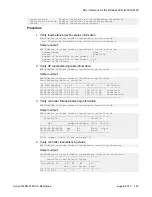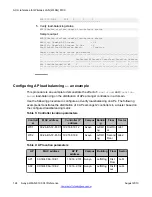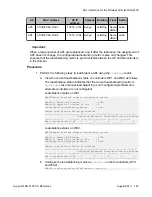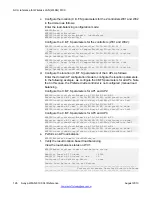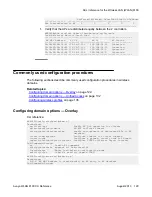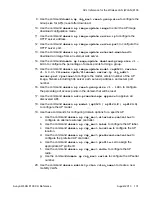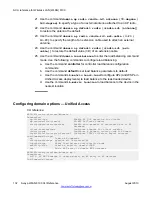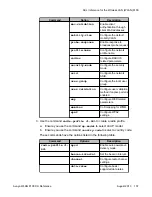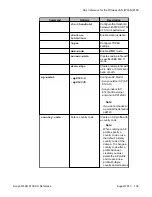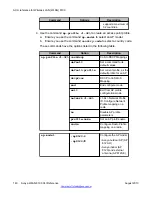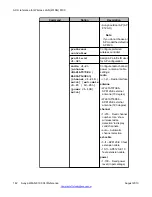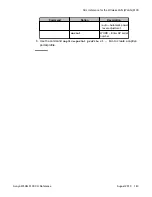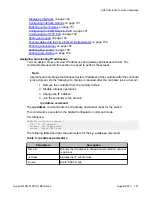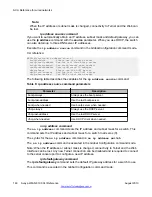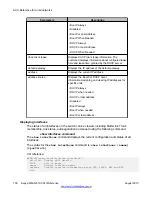
h. Use the command
domain ap <ap_mac> radio
to configure the AP
radio.
i.
Use the command
domain ap <ap_mac> serial
to configure the AP serial
number.
20. Use the command
domain mobility-vlan <vlan_name>
to create a new
mobility VLAN.
21. Use the command
domain ap radio <radio-id> antenna {70-degree |
180-degree}
to specify a type of an external antenna attached to an AP radio.
22. Use the command
domain ap default radio [<radio-id> [antenna]]
to restore the antenna the default.
23. Use the command
domain ap radio <radio-id> ext-cable {3-ft |
10-ft}
to specify the length of an extension cable used to attach an external
antenna.
24. Use the command
domain ap default radio [<radio-id> [ext-
cable]]
to restore the default value (3-ft) of an extension cable.
25. Use the command
domain load-balance
to enter the load balancing command
mode. Use the following commands to configure load balancing.
a. Use the command
controller
for controller load balance configuration
commands.
b. Use the command
default
to set load balance parameters to default.
c. Use the command
lb-metric least-load
to configure APs (and WSPs, in
Unified Access deployments) to load balance to the least loaded device.
d. Use the command
lb-metric location
to load balance to the device in the
nearest location.
26. Use the command
domain wsp <wsp_mac>
to add a WSP to the Domain WSP
database or modify an existing entry.
Configuring wireless profiles
Configure Radio Profiles, Network Profiles and AP Profiles.
CLI reference:
WCP8180(config-wireless)#ap-profile ?
<1-32> AP Profile ID
WCP8180(config-wireless)#network-profile ?
<1-64> Network Profile ID
WCP8180(config-wireless)#radio-profile ?
<1-64> Radio Profile ID
ACLI reference for the Wireless LAN (WLAN) 8100
Avaya WLAN 8100 CLI Reference
August 2013 135



